Art & Exhibitions
The Museum of Sex Is Laying Bare Andy Warhol’s Most Provocative Films
Warhol's silent, black and white films are exercises in both intimacy and voyeurism.
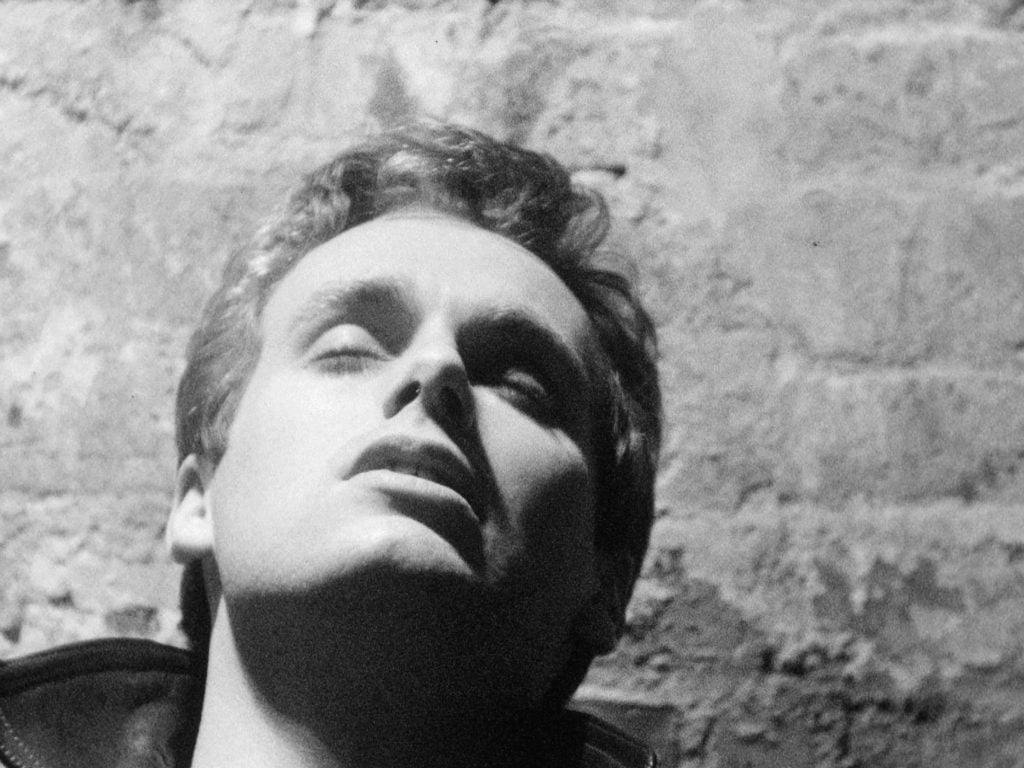
Warhol's silent, black and white films are exercises in both intimacy and voyeurism.

Sarah Cascone

Andy Warhol is coming to the Museum of Sex. The irreverent Manhattan institution is partnering with Pittsburgh’s Andy Warhol Museum to stage an exhibition of some of the great Pop artist’s early films—including the infamous Blow Job, which zooms in on a man’s face as he purportedly receives oral sex just off camera.
For people who only know Warhol from his candy-colored celebrity silk screen portraits, the Museum of Sex might not seem like the most likely fit. But sex looms large over Warhol’s career. In the 1950s, he made erotic line drawings of young men for an unrealized “Boy Book.” In the ’70s, he photographed men engaged in various sexual activities for a series of screen-printed works called “Sex Parts” that verged on pornography.
“Warhol never said ‘hey, I’m gay,’ but I don’t think he ever shied away from showing things that were, let’s just say homoerotic,” Greg Pierce, director of film and video at the Warhol and the exhibition’s curator, told me. “I don’t want to say sexuality was central, but it was a huge part of what he did and how he lived his life.”
The show will focus on three of Warhol’s best-known early movies, shot on a 60 millimeter camera. The silent, black and white films—Blow Job, Sleep, and Couch—are all from 1964. The third is the most sexually explicit, with the artist capturing a series of sexual encounters on a couch at the Factory, his New York City studio.
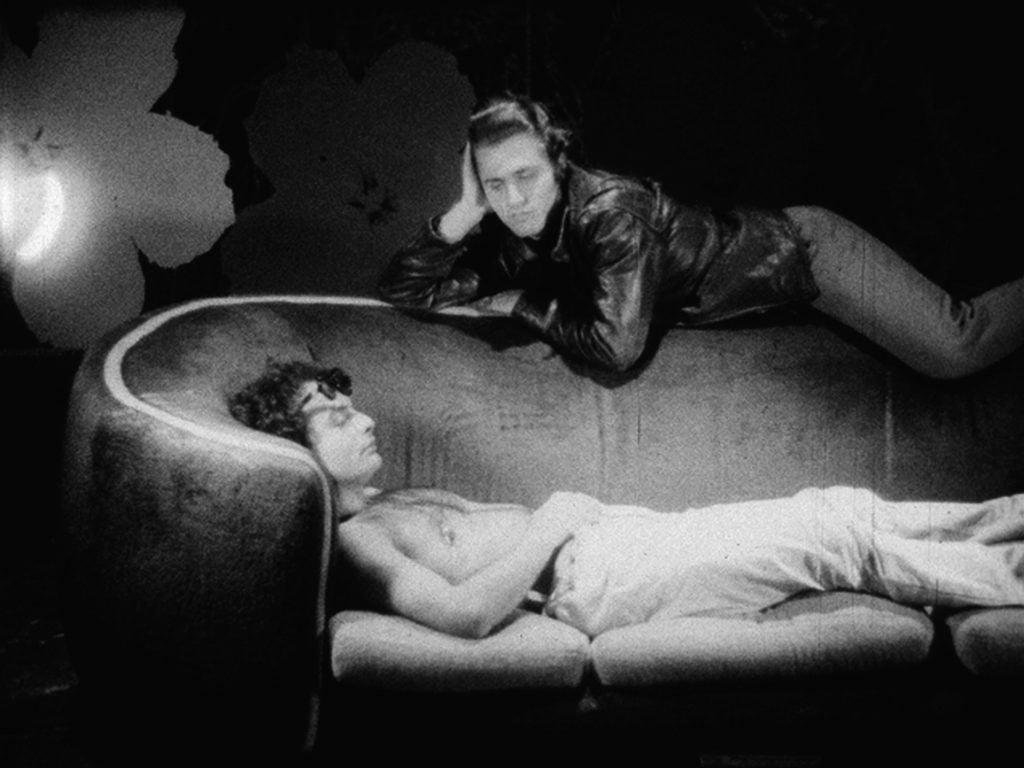
Andy Warhol, Couch (1964). Photo courtesy of the Warhol Foundation.
“They’re not shocking in 2024, but we’re talking about pre-Stonewall here,” Pierce said. “Pornography was not something you could get away with even it was straight—and this is gay sex.”
Blow Job features Warhol’s experimental technique of placing a camera on a tripod and shooting a single subject, unedited, and then slowing the footage down by a third.
“Andy had a thing about Hollywood stars. If you like somebody, you want to see everything that they do and kind of want to eat them up or drink them up,” Pierce said. “It’s like, ‘I really like looking at this boy. It only lasted three minutes when I shot it in real time, but I can make it last longer when I slow it down.’ I think there’s a connection to desire and longing.”
A year later, Warhol would shoot the Empire State Building in the same manner, creating a groundbreaking eight-hour piece called Empire that is now part of the Library of Congress’s National Film Registry of historically significant films. (It recently screened at its titular skyscraper in celebration of its 60th anniversary.)
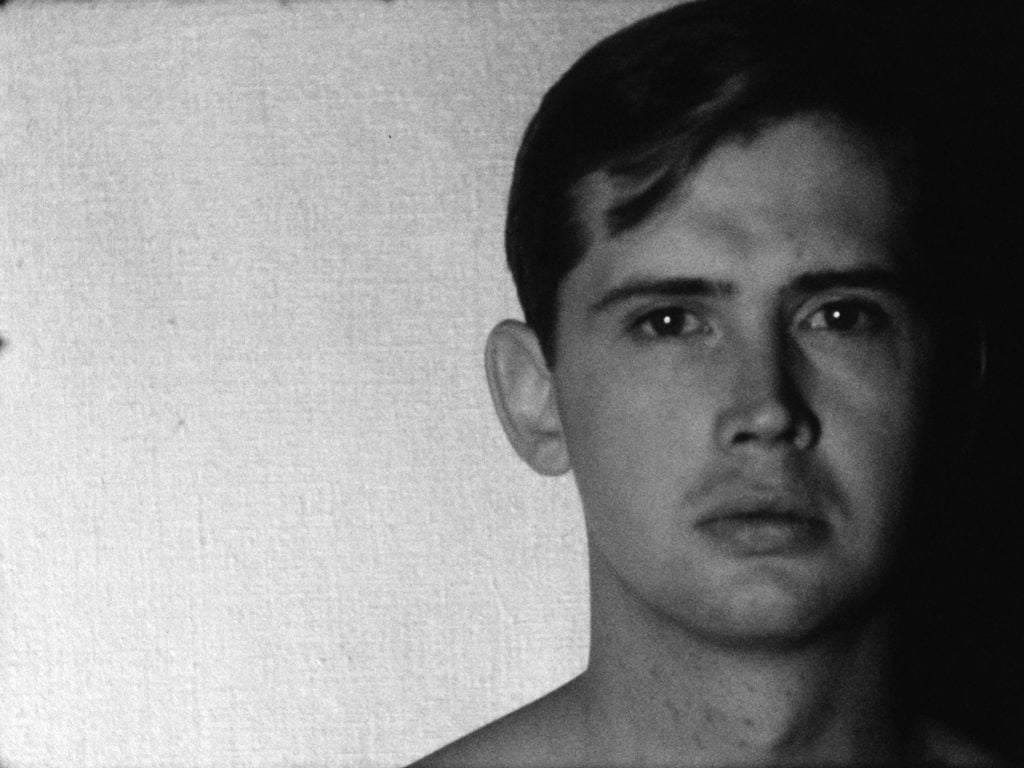
Andy Warhol, Cliff Jarr (1964). Photo courtesy of the Warhol Foundation.
“It’s really, really simple. At a point where everybody was doing double exposures and weird this and that and hyper-edited stuff, Warhol made it easy for himself to make a lot of films in a short period of time,” Pierce added. “And they didn’t look like anybody else’s, because he just he slowed everything down to a single shot.”
The show will also feature a selection of never-before-seen Factory footage from that period. Flush with money from his more commercial works, Warhol could afford to buy and shoot film with an ease that made other up-and-coming experimental filmmakers jealous, according to Pierce. The result was perhaps as much as half a million feet of film, which the Warhol Foundation is still only about halfway through scanning.
Even Warhol’s finished films of this era never enjoyed a wide release. There are some unreleased projects with erotic content where the film strips show signs of repeated viewing—perhaps for Warhol’s personal pleasure, or to share with friends. But most of the unseen footage was truly just the artist trying out a new medium, including experimenting with handheld shots before settling on using the tripod.
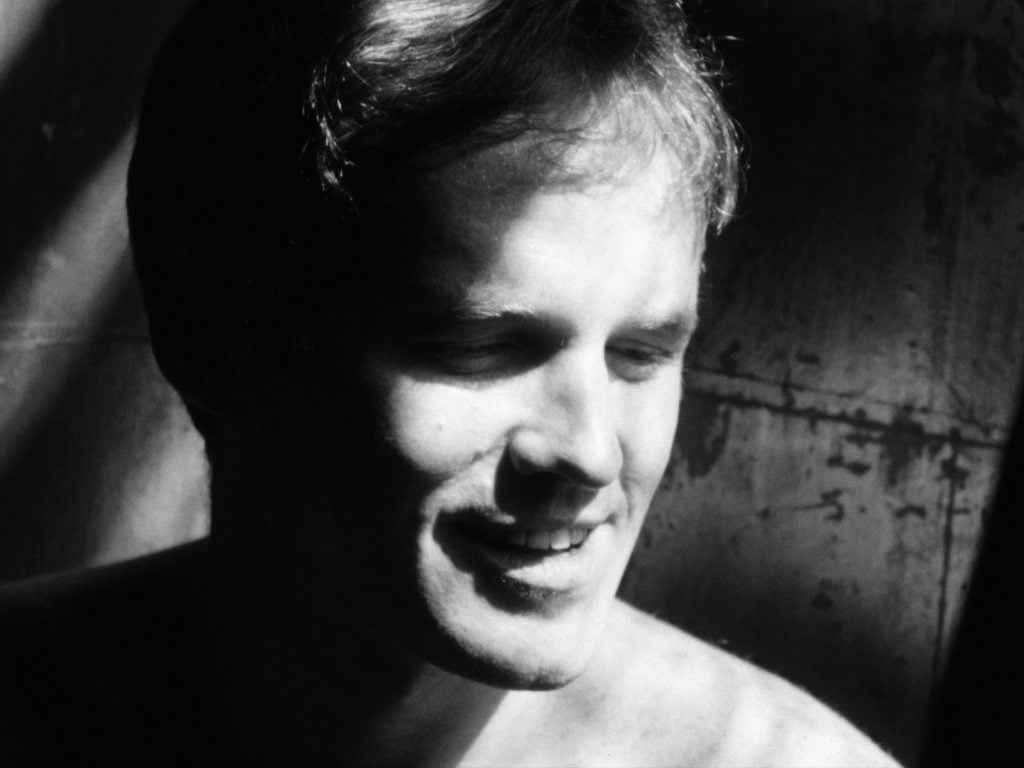
Andy Warhol, D. Deegan (1963). Photo courtesy of the Warhol Foundation.
“These are films that were never meant for anybody’s eyes except for Andy Warhol’s,” Pierce said. “You could look at them as sketches.… They aren’t well composed. They aren’t well exposed. But they have an energy to them, and they have subject matter that is very interesting, because they are intimate looks at other men.”
All this was happening at the Factory, until Valerie Solanas infamously shot Warhol in 1968. The assassination attempt “stops Warhol’s open door policy and his being able to pull from a pool of weirdos to create these movies,” Pierce said. “And I mean weirdos in a very loving way. Warhol was always surrounded by freaks who were powerful personalities and extremely talented people you know in their own right.”
Blow Job, for instance, was supposed to feature a friend of Warhol’s who ended up backing out of the salacious film shoot. Instead, the artist is said to have found a volunteer on the street, possibly identified as the actor DeVeren Bookwalter.
(“I will always say that’s one of Warhol’s greatest films,” Pierce said. “It’s the 41-minute reaction shot.”)
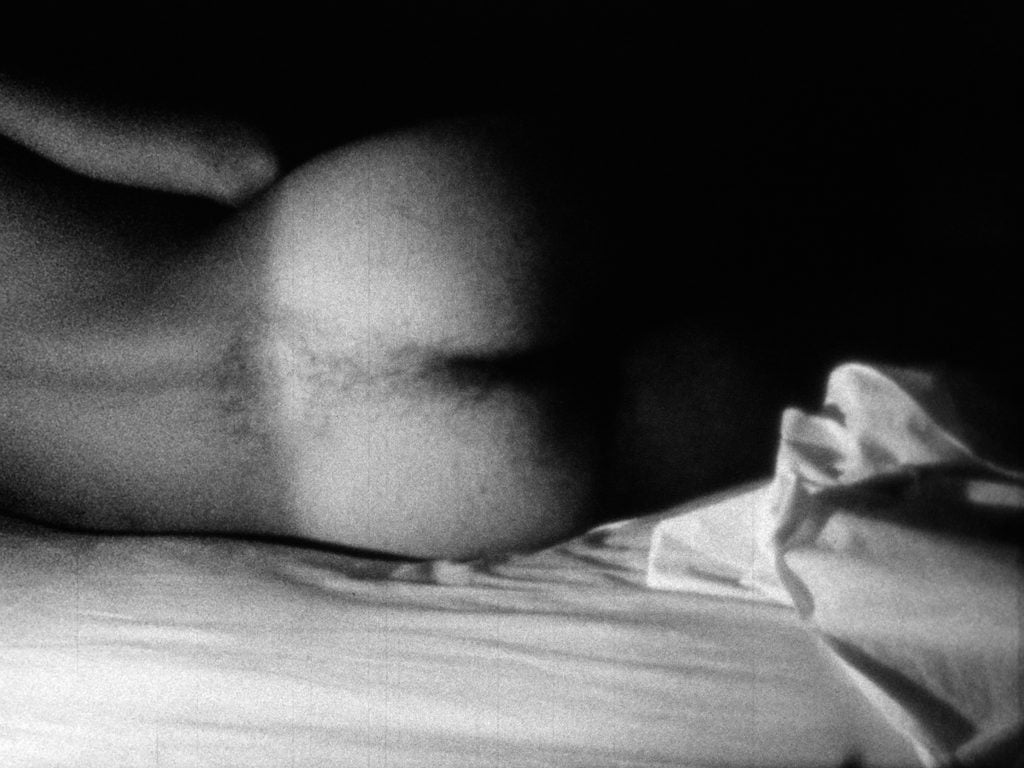
Andy Warhol, Sleep 1964). Photo courtesy of the Warhol Foundation.
In Couch, you can spot Allen Ginsberg, Jack Kerouac, and Gregory Corso, among others. And Sleep is just an extended, voyeuristic scene of Warhol’s then-lover, poet and artist John Giorno, fast asleep.
“Sleep is so important as a film. It’s Warhol’s first major film, and it is five hours and 21 minutes long. Everybody else is making 15 to 20 minute films,” Pierce said. “Warhol puts out a five hour 21 minute film of someone sleeping and it has no narrative. It has repetition. It’s silent. It was a serious statement at the time.”
The Warhol’s collaboration with the Museum of Sex came about after a visit to the former from the latter’s chief curator, Ariel Plotek.
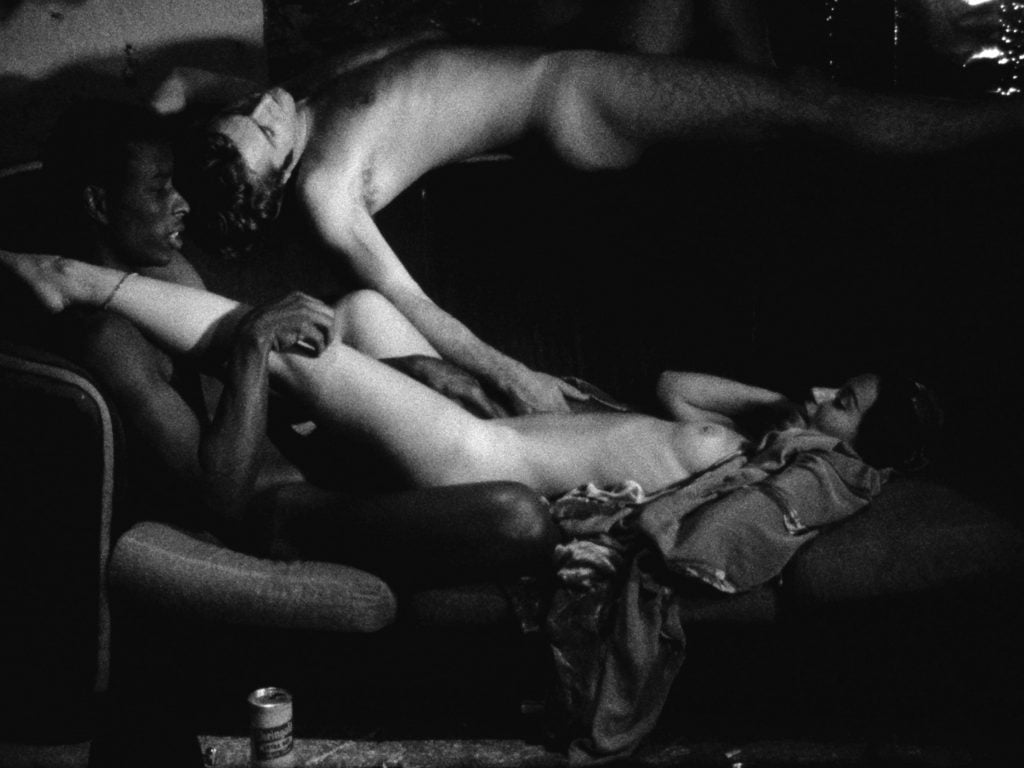
Andy Warhol, Fu (1964). Photo courtesy of the Warhol Foundation.
“Greg proposed that we focus on this period around 1963 and ’64,” he told me in an email. “You have the three big films, which he wanted to reframe as actually quite intimate.”
“I’m focusing on the queer gaze,” Pierce said. “We’re talking about intimacy versus voyeurism.”
The calculus changes, he added, when Warhol stops holding a camera and lets a stationary tripod do the work. “But he’s still looking at these people that he may or may not desire, and that still comes through in a different way.”
“Looking at Andy Looking” will be on view at the Museum of Sex, 233 5th Avenue, New York, New York, September 6, 2024–March 9, 2025.